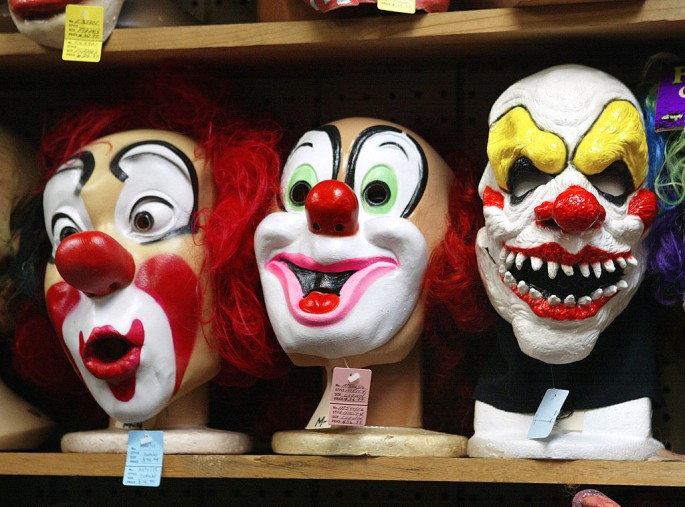Multiple sightings of creepy clowns in the United States, Australia and the United Kingdom have been reported in the past days that a clown scare epidemic appears to be in effect. Arrests have been made but authorities seem to regard the incidents as mostly isolated scare campaign or downright hoax.
In the U.S., one teenage student was detained by the police for posting on Instagram about a killer clown that turned out as a scare tactic. According to CBS News, the youngster was found trying to get attention for obvious social media mileage.
It remains unclear if the reported clown sightings are indeed hoaxes or mere naughty pranks but panic is definitely spreading, the report added. In UK, The Guardian reported of "a masked man carrying a knife jumped out in front of a group of 11 and 12 year-olds and followed them to school in County Durham." No one was hurt in the incident but the victims and residents were left traumatized by what appeared as a scare attack perpetrated by a lone-wolf.
But authorities are not taking any chances as they declared that suiting up as clowns to scare people will have legal repercussions. The same now applies in Australia, the Northern Ireland and Scotland, the report added.
Now whether real or not, what could be causing the clown scare epidemic? In a report, CNN offered a number of interesting theories.
One obvious reason is the approaching Halloween and that somebody might have thought of capitalizing with the generated fear and scare for marketing purposes. One proof was the emergence of a creepy clown clip in Massachusetts that was actually designed as a promotional material for a local horror attraction.
Or the whole episode, at least in the United States, was really about an alternate reality game or ARG, CNN said, adding that a similar case happened just a few years back. But to date, "there's no hard evidence to suggest this clown fad is actually part of an official or organized alternate reality game," the report clarified.
There are more possible causes that the CNN report proposed but in the end, the clown scare epidemic could be just another social media fad and it makes sense. "The scary clown image is perfect for social media. It is custom-made to go viral," the report quoted an expert on the topic as saying.
And true enough, clown sightings, clown scare and clown attacks keywords or hashtags are hot these days on social networking sites like Twitter and YouTube. One example is the clip below from YouTube channel Top15s that has so far attracted more than one million views:



























